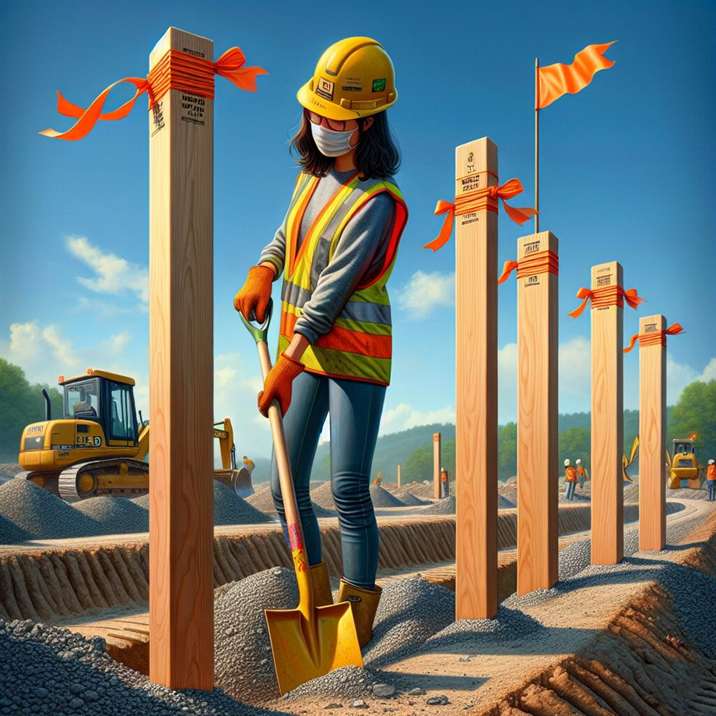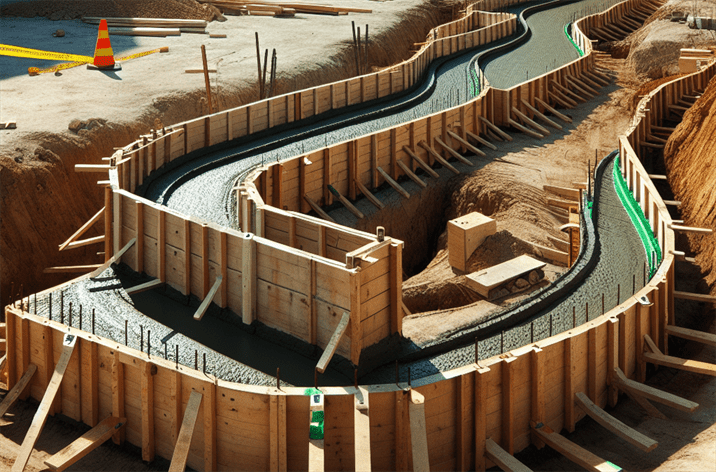The Essential Guide to Stakes and Lath in Construction
Introduction
Did you know that stakes and lath have been used in construction for centuries, yet their importance has only amplified in recent years? These simple tools play a crucial role in ensuring precision and organization on construction sites. As the construction industry continues to evolve, the need for efficient and effective tools becomes ever more critical. Recent trends indicate that the proper use of stakes and lath can significantly enhance project outcomes, improve accuracy, and save time and resources.
In this comprehensive guide, we will explore everything you need to know about stakes and lath. We will define what they are, delve into their historical context, and discuss their importance in modern construction. Additionally, you will discover their functionality, benefits, challenges, and future trends that are shaping their role in the industry. Whether you’re a seasoned construction professional or a DIY enthusiast, understanding stakes and lath is essential for successful project execution.
What are Stakes and Lath?
Definition
Stakes and lath are simple yet effective tools used primarily in construction and landscaping. Stakes are pointed wooden or metal rods that are driven into the ground to mark boundaries, support structures, or provide alignment during construction. Lath, on the other hand, are thin strips of wood that are often used to create frameworks, provide support for plaster or stucco, or mark out areas for construction. Together, they form a vital part of construction processes, helping to ensure accuracy and organization on site.
Historical Context
The use of stakes and lath dates back thousands of years. Ancient civilizations employed similar tools to mark property boundaries and outline construction sites. For instance, the Egyptians used wooden stakes to measure and lay out the foundations of their monumental structures. Over time, the materials and designs have evolved, but the fundamental purpose of stakes and lath remains unchanged. Today, advancements in materials and technology have led to the creation of more durable and versatile options, making them indispensable in modern construction.
The Importance of Stakes and Lath
In recent years, the prominence of stakes and lath has surged due to several factors. As construction projects become increasingly complex, the need for accurate measurements and clear delineations has never been more critical. Additionally, with the rise of sustainable construction practices, many builders are turning to eco-friendly materials for stakes and lath, aligning with environmental goals. The seamless integration of technology, such as laser alignment tools, has also enhanced the utility of stakes and lath, making them essential for achieving precise results.
Stakes and Lath in the Context of Construction
Stakes and lath find applications in various construction projects, from residential buildings to large commercial developments. They are used to outline property boundaries, establish grading levels, and provide support for temporary structures. Their versatility makes them suitable for different tasks, enhancing project efficiency and communication among team members.
Key Players or Contributors
Numerous companies and innovations have significantly impacted the stakes and lath market. Manufacturers are now producing high-quality, durable materials that cater to the specific needs of construction professionals. For instance, companies specializing in eco-friendly stakes and lath have emerged, providing sustainable options without compromising on quality.
For more on the benefits of using stakes and lath, visit our article on benefits of using stakes and lath in construction.

How Does Stakes and Lath Work?
The Mechanics of Stakes and Lath
The effective use of stakes and lath in construction involves a step-by-step process. Here’s how they typically work:
-
Planning and Layout: Before starting any project, it’s essential to have a clear plan. This includes identifying the project boundaries and layout.
-
Driving Stakes: Construction workers drive stakes into the ground at critical points to establish the perimeter of the project. These stakes serve as reference points for measurements and alignments.
-
Attaching Lath: Once the stakes are in place, lath can be attached to them. This creates a visual guide for the construction team, helping them understand the project’s dimensions and layout.
-
Marking Levels: Lath can also be used to mark different levels and grades on a site, ensuring that everything is built to specification.
-
Support Structures: In some cases, stakes may be used to support temporary structures, providing stability during the construction process.
Technological Foundations of Stakes and Lath
The integration of technology has transformed how stakes and lath are utilized in construction. Laser leveling tools, for instance, have become commonplace, allowing for greater precision when setting up stakes. These tools can project laser lines that assist in aligning stakes and lath, ensuring that they are perfectly straight and at the correct height.
Additionally, advancements in materials have led to the creation of durable stakes made from recycled materials, which are not only environmentally friendly but also designed to withstand harsh weather conditions and heavy use.
Real-World Applications of Stakes and Lath
Stakes and lath are utilized in various real-world applications, including:
- Residential Construction: Used to outline foundations, driveways, and landscaping.
- Commercial Projects: Marking property lines and setting up temporary structures.
- Landscaping: Creating garden layouts and ensuring proper grading.
- Surveying: Providing precise measurements for land evaluation and development.
Case Studies/Examples of Stakes and Lath in Action
-
Residential Home Building: A construction company used stakes and lath to outline the foundation of a new home. By driving stakes into the ground and attaching lath, they ensured that the foundation was laid out accurately, preventing costly mistakes during the building process.
-
Landscaping Project: In a large garden renovation, stakes were used to mark flower bed boundaries. The landscaping team utilized lath to create levels for planting, ensuring that everything was placed at the correct height for optimal growth.
-
Commercial Development: A commercial construction firm employed stakes and lath to delineate the site for a new shopping center. By accurately marking the property lines and elevations, they facilitated a smooth construction process, reducing delays and miscommunication.
Benefits and Drawbacks of Stakes and Lath
While stakes and lath are incredibly useful, they do come with their advantages and drawbacks.
Benefits:
- Cost-Effective: Stakes and lath are generally affordable, making them a budget-friendly choice for construction projects.
- Easy to Use: With minimal training, construction workers can effectively utilize stakes and lath to achieve precise measurements.
- Versatile Applications: They can be used in various contexts, from small DIY projects to large commercial constructions.
Drawbacks:
- Durability Concerns: Wooden stakes may rot or break over time, especially in wet conditions.
- Manual Labor Required: Setting up stakes and lath can be labor-intensive, requiring significant physical effort.
Future Trends for Stakes and Lath
As the construction industry continues to evolve, so too does the use of stakes and lath. Here are some trends to watch:
-
Sustainable Materials: The push for eco-friendly construction practices is leading to an increase in the use of recycled and sustainable materials for stakes and lath. This not only helps the environment but also appeals to consumers who prioritize sustainability.
-
Integration of Technology: The use of technology in construction is on the rise. Expect to see more laser-guided systems and digital tools that can work in conjunction with traditional stakes and lath to provide even more accuracy and efficiency.
-
Customization: The demand for customizable stakes and lath is growing. Companies are beginning to offer tailored solutions to meet specific project requirements, enhancing the usability of these tools.
-
Education and Training: As the industry evolves, there will be a greater emphasis on training construction workers in the best practices for using stakes and lath, ensuring that they can leverage these tools effectively.
Conclusion
Stakes and lath are indispensable tools in the construction realm, playing a vital role in ensuring precision, organization, and efficiency on site. Understanding their functionality, benefits, and challenges is crucial for anyone involved in construction, whether as a professional or a DIY enthusiast. As the industry looks to the future, embracing sustainable materials and technological advancements will only enhance the effectiveness of these tools.
By incorporating stakes and lath into your construction projects, you are not merely using tools; you are setting the foundation for success—quite literally. So the next time you embark on a construction journey, remember the profound impact that these simple yet powerful instruments can have on your project’s outcome. For further insights into choosing the best stakes and lath for your construction needs, check out our guide on best practices for using stakes and lath in construction.

